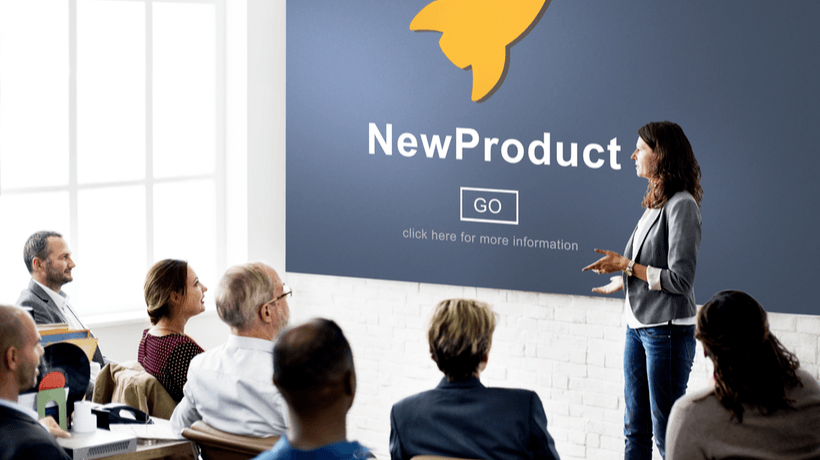The key to creating an engaging employee training experience is to focus on the growth opportunities they offer your employees. It may take some time to restrategize your current employee training program, but the time and effort are worth the payoff. Lucky for you, we’ve done a little bit of the work for you already.
We’ve sourced advice from professionals across industries and career fields for their best tips and tricks for improving employee training. Here are the best training and development ideas for you:
1. Use technology to your advantage
“We use technology throughout our training and new hire onboarding process. The program we currently use has several courses categorized by topic (company values, client interactions, our company software, etc). We cover the topics in a way that is beneficial for all types of learners including visual, audio, reading/writing, and kinesthetic.
Using a training management software gives us access to great resources like video tutorials and audio files of how to interact with a client via phone. With each video tutorial, there is a reading segment covering the main points of the video to reiterate the content covered and to allow employees to write down the information at their own pace.
2. Match your high performers with new employees
“The best way to onboard a new employee is simply to have them work with the department supervisor or high-performing employee side-by-side for a few days. The supervisor can help them get situated, walk them through common tasks and projects, and show the new staff member how someone experienced does their job. This personal approach lets the new worker ask questions at their own pace and see the steps in action.

Although larger training programs are more cost and time-efficient for a company, sometimes they’re not enough. Pamphlets and presentations will bore them so that they barely process the information being delivered to them.
People are much less likely to ask clarification questions when they are in a large group, so the new staff members will likely start getting lost but will be too embarrassed to ask for help. That’s why we’ve put such a focus on mentorship and employee-run training.”
– Nate Masterson, HR Manager for Maple Holistics
3. Create excitement about a “boring” training topic
“One of the best ways to capture your employee’s attention is by incentivizing training and practice. In my own personal opinion, there are three incentives that motivate most employees – money, time off work, and free food.
If you’re having a training session that involves your employees, turn it into an experience they can get excited about. Create a half-day session for the training with a catered lunch where employees get the other half of the day off as an incentive for being in attendance.
Tip: Discover how to create a top-notch employee handbook with these tips, tricks, and examples!
The real fun begins when the training is over. You can continue rewarding employees for implementing what they learned. An example of this could be employees who change their password every 90 days without you having to ask them to receive a gift card or a free lunch.
We recently had a security awareness training which I believe is critically important for employees, but we recognized the topic is incredibly dry. We decided to turn it into something exciting for our employees and it turned out great!”
– Brandon Schroth, Digital Manager at Gillware
4. Take your training outside the office
“Recently I visited San Francisco to participate in the training symposium my company organized. The training itself took us 7,000 miles away from our office where we learned about the best practices in content marketing and got introduced to advanced techniques. But what made this training remarkable were the outdoors activities organized for the participants. That made this training an unforgettable experience fleshed out with breathtaking moments in nature.
Getting to enjoy the wondrous scenery of San Francisco Bay – while sailing and hiking – in a company full of smart, perceptive, and fun people as a part of the company’s training program, will stick as a pleasurable memory for a long time.

So, my tip for successful staff training is: make your training memorable. Plan the free-time activities as carefully as the training sessions. That’s how you’ll get not just to instill knowledge into participant’s minds, but also caring and gratitude into their attitude towards the company. When they return to their daily tasks, even when they don’t remember or don’t know how to do something, they’ll be motivated to invest the effort to find the answers by themselves and do the best job they can.”
– Ana Casic, Media Relations Coordinator at TalentLMS
5. Understand that people learn things differently
“Now more than ever, it’s critical to understand the best learning methods for your workforce prior to rolling out any program. Each generation has a preference, whether it be hands-on, online, or self-directed on both topic and timing.
When providing skills training that is applicable to all employees such as communication, change management, or conflict resolution, offering the training at various times over multiple sessions can be very effective. When employees aren’t forced into a schedule that can create conflict with other responsibilities, they are better able to focus. We’ve also offered training after-hours, happy-hour style, to pull in more employees and offer a casual approach – great for those that are nervous about attending any training!
When employees feel they have a choice over the training they receive, they are more likely to participate. Sending surveys with topics for upcoming training can be very effective. Identify the most popular ones and work them into a training schedule. This is also a good way to better understand what the employees feel is needed for training, rather than making arbitrary decisions.”
– Richard Pummell, Human Resources Lead at Develop Intelligence
6. Use stories to show your employees the value
“Too often training is about providing content for people to use in their jobs but without the stories and examples, people can use to relate it to their jobs. My training success tip is to include specific stories of how to use the tools from training in your day-to-day job.

If you can relate the stories to actual situations and problems the people see in their daily jobs, it will help them to better understand and use the training tools. I always use stories in all of my training and have worked to improve my storytelling to further improve my training.”
– Michael Arnold, Coach and Trainer at The John Maxwell Team
7. Expand your idea of what employee training looks like
“Training doesn’t stop once your employees are onboarded. Keep the education going by implementing a mentorship program. This will help keep things fresh for even your most experienced employees.
Along with being a great way to train, a mentorship program will also help develop strong relationships between your new and existing employees, which will help create a better work environment and a strong office culture!”
– Brian Kelley, Vice-President of Bellwether Community Credit Union
8. Hire the professionals to come train your staff
“We consider staff training one of the most crucial elements in our employees’ development, so a training budget is one of the major perks we provide with a job offer.
We are a technological startup and we’re always looking to train our staff to become better at what they do. To do that, we seek industry experts from around the world to train our staff. Instead of waiting for local training or seminars to open up, we invest in unique opportunities elsewhere.

Let’s say we need to upskill our SEO team, we seek a world-class SEO guru and hire them to come on-sight to train our staff. Yes, it can get quite expensive but it’s totally worth it. Our team gets to meet with the best people in the field and learn about something on their time, about the topics they want.”
– Nina Krol, Community Manager at Zety
Learn, baby, learn!
Now that you know how to steal from the best, it’s time to make it your own. Take these ideas from our industry leaders and breathe new life into your employee training plan.



